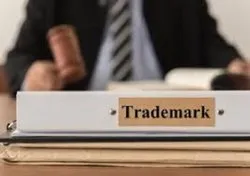What Happens When Your Trademark Application Is Rejected?

Filing for a trademark is an important step in protecting your brand identity. However, not every trademark application results in approval. If your application gets rejected, it’s essential to understand why and what steps you can take next. This guide will walk you through the implications and remedies following a trademark rejection.
Understanding the Trademark Rejection
A trademark application can be rejected due to several legal or procedural reasons. Knowing the root cause helps you decide the appropriate course of action.
Common Reasons for Trademark Rejection
- Similarity with Existing Trademarks: If your mark closely resembles a registered trademark, it may be rejected to avoid public confusion.
- Lack of Distinctiveness: Generic or descriptive names are often denied registration.
- Incorrect Classification: Filing under the wrong class of goods/services can lead to rejection.
- Procedural Errors: Incomplete documents, incorrect fees, or non-compliance with formalities may also cause rejection.
What to Do After a Trademark Rejection?
Facing a trademark rejection isn't the end of the road. There are clear legal pathways to respond, revise, or appeal.
Step 1: Review the Examination Report
The Registrar issues an Examination Report detailing the reasons for rejection. It’s crucial to analyze it carefully, often with the help of a legal expert.
Step 2: File a Reply to the Examination Report
You are typically given 30 days to respond. In your reply, you can:
- Provide legal grounds for why your trademark should be accepted.
- Submit evidence to support the uniqueness and usage of your mark.
- Rectify any procedural or classification errors.
Step 3: Attend a Hearing (if required)
If the Trademark Office is not satisfied with your reply, they may schedule a show-cause hearing. This is your chance to argue your case in person or through your representative.
Alternatives If the Rejection Stands
If your application is still rejected even after a hearing, you can:
Appeal to the Intellectual Property Appellate Board (IPAB)
This is a legal appeal to overturn the Registrar’s decision. You must file the appeal within the stipulated time, supported by strong legal arguments.
File a Fresh Trademark Application
If an appeal doesn’t seem viable, consider making changes to your brand name or logo and reapplying for Trademark registration online.
How to Prevent Trademark Rejection?
Avoiding mistakes from the start can save you time, money, and effort.
Conduct a Comprehensive Trademark Search
Before applying for Trademark Registration in India, do a proper search to ensure your mark is not already in use.
Consult a Trademark Attorney
Whether you’re applying for trademark registration in Delhi or elsewhere, a legal expert can help ensure your application is error-free and fully compliant.
Choose the Right Class and Format
Make sure your trademark is correctly categorized and follows all formatting guidelines set by the Indian Trademark Office.
Conclusion
A trademark rejection can feel like a setback, but it’s a manageable one with the right knowledge and strategy. Whether you choose to respond, appeal, or reapply, always ensure your brand is adequately protected. With proper research and expert assistance, you can increase your chances of a successful Trademark Registration in India and safeguard your business identity effectively.
